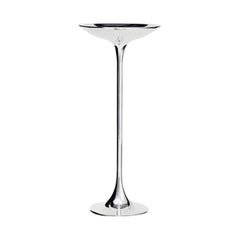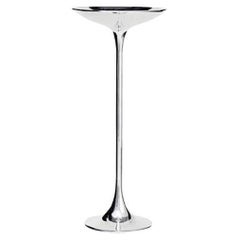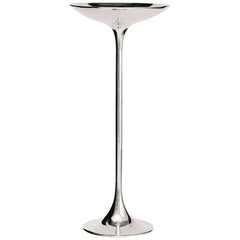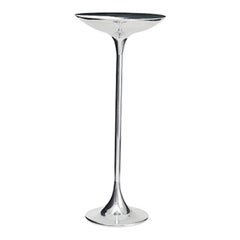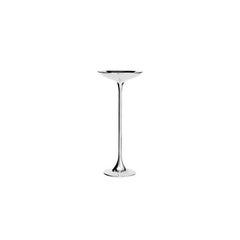Driade Ping
21st Century and Contemporary Italian Side Tables
Aluminum
21st Century and Contemporary Italian Side Tables
Aluminum
21st Century and Contemporary Italian Modern Coffee and Cocktail Tables
Aluminum
21st Century and Contemporary Italian Modern Gueridon
Aluminum
21st Century and Contemporary Italian Modern Side Tables
Aluminum
21st Century and Contemporary Italian Modern Side Tables
Aluminum
People Also Browsed
2010s Mexican Brutalist Wall-mounted Sculptures
Wood
21st Century and Contemporary Russian Brutalist Cabinets
Oak
2010s Scandinavian Modern Chandeliers and Pendants
Brass
2010s Polish Mid-Century Modern Stools
Fabric, Bouclé, Beech
Vintage 1970s German Mid-Century Modern Flush Mount
Chrome
Late 20th Century Italian Modern Chairs
Steel
Vintage 1970s Italian Mid-Century Modern Gueridon
Brass, Steel
2010s American Modern Contemporary Art
Paper
21st Century and Contemporary Turkish Modern Turkish Rugs
Wool, Cotton
2010s German Mid-Century Modern Chandeliers and Pendants
Brass
2010s Dutch Modern Tableware
Travertine
2010s Italian Other Chandeliers and Pendants
Blown Glass
Mid-20th Century Italian Mid-Century Modern Wall Mirrors
Metal
Vintage 1970s American Mid-Century Modern Table Lamps
Ceramic, Stoneware, Wood
Vintage 1970s American Mid-Century Modern Lounge Chairs
Velvet
21st Century and Contemporary Dining Room Chairs
Linen, Foam, Wood
Driade Ping For Sale on 1stDibs
How Much is a Driade Ping?
Driade for sale on 1stDibs
Italian furniture brand Driade offers modern designs that are joyful, whimsical and slightly mischievous — words that might be used to describe the tree nymph of Greek mythology for which the company is named. Faye Toogood’s chunky, stout Roly Poly armchair and Fabio Novembre’s enigmatic Nemo chair — in which a backrest assumes the form of a human face — are just two examples of Driade’s eclectic furnishings.
Driade was founded in 1968 by brother and sister Enrico and Antonia Astori, and Adelaide Acerbi Astori, Enrico’s wife. Described by the company as a “factory of art,” Driade was focused solely on bringing distinctive and creative seating, case pieces and decorative objects to market in its early years. The brand sought to mass-produce decor and furniture that could also be seen as provocative works of art.
Driade's initial collaborations included Italian designers such as Enzo Mari, Nanda Vigo, Giotto Stoppino and Rodolfo Bonetto, to name a few. In the 1980s, the brand worked with influential and renowned designers from around the globe. In 1984, Driade partnered with French designer Philippe Starck and debuted his iconic Costes armchair during the same year. Projects with architects and furniture designers such as Ron Arad, Toyo Ito, Borek Sipek, Patricia Urquiola and others followed into the 2000s.
Over more than five decades — the company celebrated their 50th anniversary in 2018 — Driade’s fruitful partnerships have culminated in a vast catalog of chairs, sofas, coffee tables and other furnishings for the home and garden that evoke a unique and diverse blend of cultures.
Driade has also garnered international acclaim, winning the Compasso d’Oro award in 1979 and 2001 for Enzo Mari’s Delfira chair and ebony-finished, chipboard-top table, and again in 2008 for Ron Arad’s MT3 rocking armchair.
On 1stDibs, discover a range of vintage and contemporary Driade tables, cabinets, armchairs and other furniture.
Finding the Right Tables for You
The right vintage, new or antique tables can help make any space in your home stand out.
Over the years, the variety of tables available to us, as well as our specific needs for said tables, has broadened. Today, with all manner of these must-have furnishings differing in shape, material and style, any dining room table can shine just as brightly as the guests who gather around it.
Remember, when shopping for a dining table, it must fit your dining area, and you need to account for space around the table too — think outside the box, as an oval dining table may work for tighter spaces. Alternatively, if you’ve got the room, a Regency-style dining table can elevate any formal occasion at mealtime.
Innovative furniture makers and designers have also redefined what a table can be. Whether it’s an unconventional Ping-Pong table, a brass side table to display your treasured collectibles or a Louis Vuitton steamer trunk to add an air of nostalgia to your loft, your table can say a lot about you.
The visionary work of French designer Xavier Lavergne, for example, includes tables that draw on the forms of celestial bodies as often as they do aquatic creatures or fossils. Elsewhere, Italian architect Gae Aulenti, who looked to Roman architecture in crafting her stately Jumbo coffee table, created clever glass-topped mobile coffee tables that move on bicycle tires or sculpted wood wheels for Fontana Arte.
Coffee and cocktail tables can serve as a room’s centerpiece with attention-grabbing details and colors. Glass varieties will keep your hardwood flooring and dazzling area rugs on display, while a marble or stone coffee table in a modern interior can showcase your prized art books and decorative objects. A unique vintage desk or writing table can bring sophistication and even a bit of spice to your work life.
No matter your desired form or function, a quality table for your living space is a sound investment. On 1stDibs, browse a collection of vintage, new and antique bedside tables, mid-century end tables and more .
